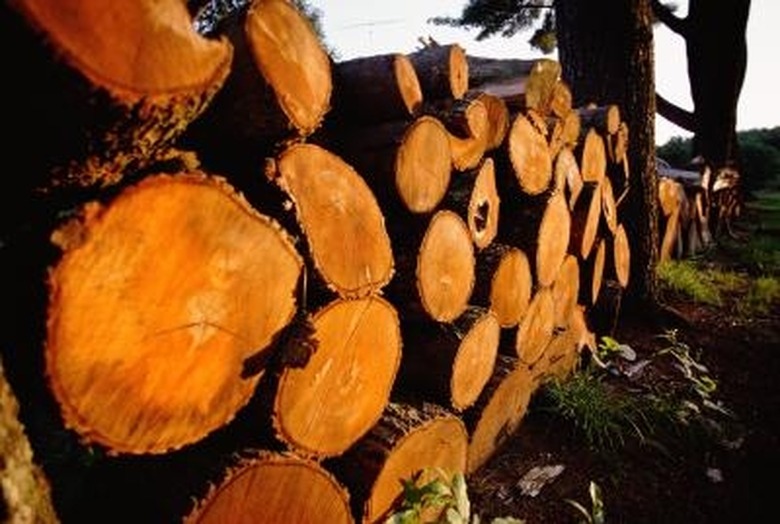List Of Drying Times For Firewood
Freshly cut firewood is up to 50 or 60 percent water. Most of that moisture must be eliminated for the wood to burn properly and give off effective heat; the ideal moisture content is 20 to 25 percent or less. How long it takes to get that moisture reduction depends on the type of wood, where and how it is stored and the local climate. Even standing dead trees do not lose moisture; only cut and split wood will dry effectively.
Cut Early, Burn Late
The old farm adage was "cut in spring, burn in winter." That's pretty much true — it can take nine months to a year for some firewood to properly dry or "cure." Drying time varies with the cut; 2-foot pieces (a standard firewood length) will dry in about six months, while 4-footers may take a year. Split wood dries faster because it has more area exposed to the air than full logs with bark.
- Freshly cut firewood is up to 50 or 60 percent water.
- Split wood dries faster because it has more area exposed to the air than full logs with bark.
Split Quickly
Cut firewood before trees begin leafing out in spring. If a felled tree is already fully leafed, let it sit until the leaves turn crisp and dry; they will expel much moisture from the wood as they dry. Split wood as soon as possible after it is cut. Green wood is easier to split than seasoned wood, and the quicker more wood surface is exposed, the better.
Stack Wood Loosely
Stack firewood outdoors, loosely, so air can flow between the logs. There are two common stacking methods — building a square column of logs on two ends and placing horizontal logs between them or piling logs in a loose pyramid form starting with three logs in a triangle and adding to the pile until it is as high and round as you can handle. Either method will work, so long as air can circulate. Put wood piles where they are exposed to strong air flows. Make two small stacks rather than one big one to improve air exposure.
- Cut firewood before trees begin leafing out in spring.
- Stack firewood outdoors, loosely, so air can flow between the logs.
Protect Against Rain
Cover wood with a tarpaulin to protect against rain or snow. Leave the tarp loose enough that it does not interfere with air circulation around and through the stack. Remove the tarp during periods when rain is not likely; expose the wood as much as possible to sunlight and heat, to speed drying.
Get Good Wood
Start with good wood. Hardwoods, such as oak, ash, most birches and pecan, burn hotter and will provide the most heat for the weight. Softwoods, including pine, cottonwood, cedar and hemlock, burn rapidly but produce less heat for the weight. Avoid woods like elm, hickory and gum, which are almost impossible to split. Woods with high pitch content, such as pine, cure more slowly.
- Cover wood with a tarpaulin to protect against rain or snow.
- Softwoods, including pine, cottonwood, cedar and hemlock, burn rapidly but produce less heat for the weight.
